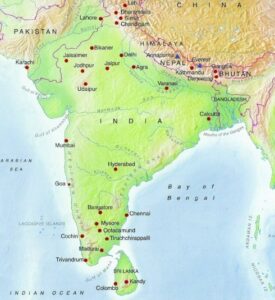Mahi
BegginerResources & Suggestions
Mains Answer Writing Latest Articles
Daily Answer Writing Practice Questions (18 April 2025)
Do you agree with the claim that indecision and risk aversion are prevalent issues in Indian bureaucracy? Support your answer with logical reasoning. (150 words) ऐसा कहा जाता है कि भारतीय नौकरशाही में अनिर्णय और जोखिम से बचने की प्रवृत्ति ...
Strengthening India’s Cyber Defence
Rising Threats Digital Era Challenges: 2024 marks a significant rise in digital threats, particularly from AI and cyberattacks. Key Issues: Disinformation campaigns. Cyber fraud affecting daily life. Current Major Cyber Threats Ransomware Rampage: Over 48,000 instances of WannaCry ransomware detected ...
भारत की साइबर सुरक्षा
बढ़ते खतरे कृत्रिम बुद्धिमत्ता (AI) और साइबर हमले: 2024 में AI और साइबर हमलों के खतरे में वृद्धि। महत्वपूर्ण अवसंरचना पर हमले: डिजिटल हमलों और दुष्प्रचार अभियानों की संभावना बढ़ी है। प्रमुख साइबर खतरें रैनसमवेयर का प्रकोप: 48,000 से अधिक ...

Why is India considered as a subcontinent? Elaborate your answer. (150 words)[UPSC 2021]
The Indian subcontinent is considered a subcontinent due to its distinct geographic and geological features. Geologically -it is part of the Indian Plate, which separated from Gondwana and collided with the Eurasian landmass around 55 million years ago. Geographically- it is a large, peninsular regiRead more
The Indian subcontinent is considered a subcontinent due to its distinct geographic and geological features.
Geologically –it is part of the Indian Plate, which separated from Gondwana and collided with the Eurasian landmass around 55 million years ago.
Geographically- it is a large, peninsular region in South Asia, delineated by the Himalayas to the north, the Hindu Kush to the west, and the Arakanese to the east. It is bounded by the Indian Ocean to the south, the Arabian Sea to the southwest, and the Bay of Bengal to the southeast.
This region’s relative isolation from the rest of Eurasia, coupled with its unique climatic and cultural diversity, reinforces its classification as a subcontinent.
The varied landscapes and rich socio-cultural tapestry within the subcontinent reflect its historical significance and distinct identity.
Therefore, The main reason India is considered a subcontinent is its distinct geographical separation from the rest of Asia, primarily due to the imposing Himalayan mountain range to the north, which creates a natural barrier. This physical separation, combined with the subcontinent’s unique climate, ecosystems, and cultural identity, contributes to its classification as a subcontinent.

See lessExplain the factors responsible for the origin of ocean currents. How do they influence regional climates, fishing, and navigation? (200 words) [UPSC 2015]
Ocean currents are influenced by: 1. Earth’s Rotation : The Coriolis effect deflects currents right in the Northern Hemisphere and left in the Southern Hemisphere, shaping their paths. 2. Wind Patterns: Prevailing winds, like trade winds and westerlies, drive surface currents, establisRead more
Ocean currents are influenced by:
1. Earth’s Rotation : The Coriolis effect deflects currents right in the Northern Hemisphere and left in the Southern Hemisphere, shaping their paths.
2. Wind Patterns: Prevailing winds, like trade winds and westerlies, drive surface currents, establishing major systems such as the Gulf Stream and Kuroshio Current.
3. Temperature and Salinity (Thermohaline Circulation): Temperature and salinity differences create density variations. Warm, less saline water stays at the surface, while colder, saltier water sinks, driving deep currents and global circulation.
4. Influx of Freshwater: Melting ice and river inflows dilute seawater, affecting salinity and density, which can disrupt current patterns.
5. Topography of the Ocean Floor: Underwater features like ridges and valleys influence current direction and speed.
6. Modification Factors: Human activities, seasonal changes, and climate change alter current patterns by impacting wind, temperature, and freshwater inputs.
Influence on Regional Climates:
– Warm currents, such as the Gulf Stream, moderate coastal climates, while cold currents, like the California Current, cool regions, affecting weather.
Impact on Fishing:
– Currents affect nutrient distribution, with upwellings supporting fisheries. Climate change disrupts currents, altering nutrient flow and fish migration, leading to reduced stocks in traditional areas and potential new fishing grounds.
Effect on Navigation:
– Mariners use current patterns for efficient routing, optimizing fuel use and ensuring safe passage.
See less